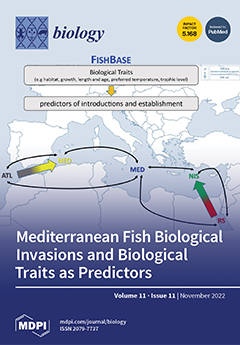Globally, increasing temperatures due to climate change have severely affected natural ecosystems in several regions of the world; however, the impact on the alpine plant may be particularly profound, further raising the risk of extinction for rare and endangered alpine plants. To identify
[...] Read more.
Globally, increasing temperatures due to climate change have severely affected natural ecosystems in several regions of the world; however, the impact on the alpine plant may be particularly profound, further raising the risk of extinction for rare and endangered alpine plants. To identify how alpine species have responded to past climate change and to predict the potential geographic distribution of species under future climate change, we investigated the distribution records of
A.
chensiensis, an endangered alpine plant in the Qinling Mountains listed in the Red List. In this study, the optimized MaxEnt model was used to analyse the key environmental variables related to the distribution of
A.
chensiensis based on 93 wild distribution records and six environmental variables. The potential distribution areas of
A.
chensiensis in the last interglacial (LIG), the last glacial maximum (LGM), the current period, and the 2050s and 2070s were simulated. Our results showed that temperature is critical to the distribution of
A.
chensiensis, with the mean temperature of the coldest quarter being the most important climatic factor affecting the distribution of this species. In addition, ecological niche modeling analysis showed that the
A.
chensiensis distribution area in the last interglacial experiencing population expansion and, during the last glacial maximum occurring, a population contraction. Under the emission scenarios in the 2050s and 2070s, the suitable distribution area would contract significantly, and the migration routes of the centroids tended to migrate toward the southern high-altitude mountains, suggesting a strong response from the
A.
chensiensis distribution to climate change. Collectively, the results of this study provide a comprehensive and multidimensional perspective on the geographic distribution pattern and history of population dynamics for the endemic, rare, and endangered species,
A.
chensiensis, and it underscores the significant impact of geological and climatic changes on the geographic pattern of alpine species populations.
Full article






